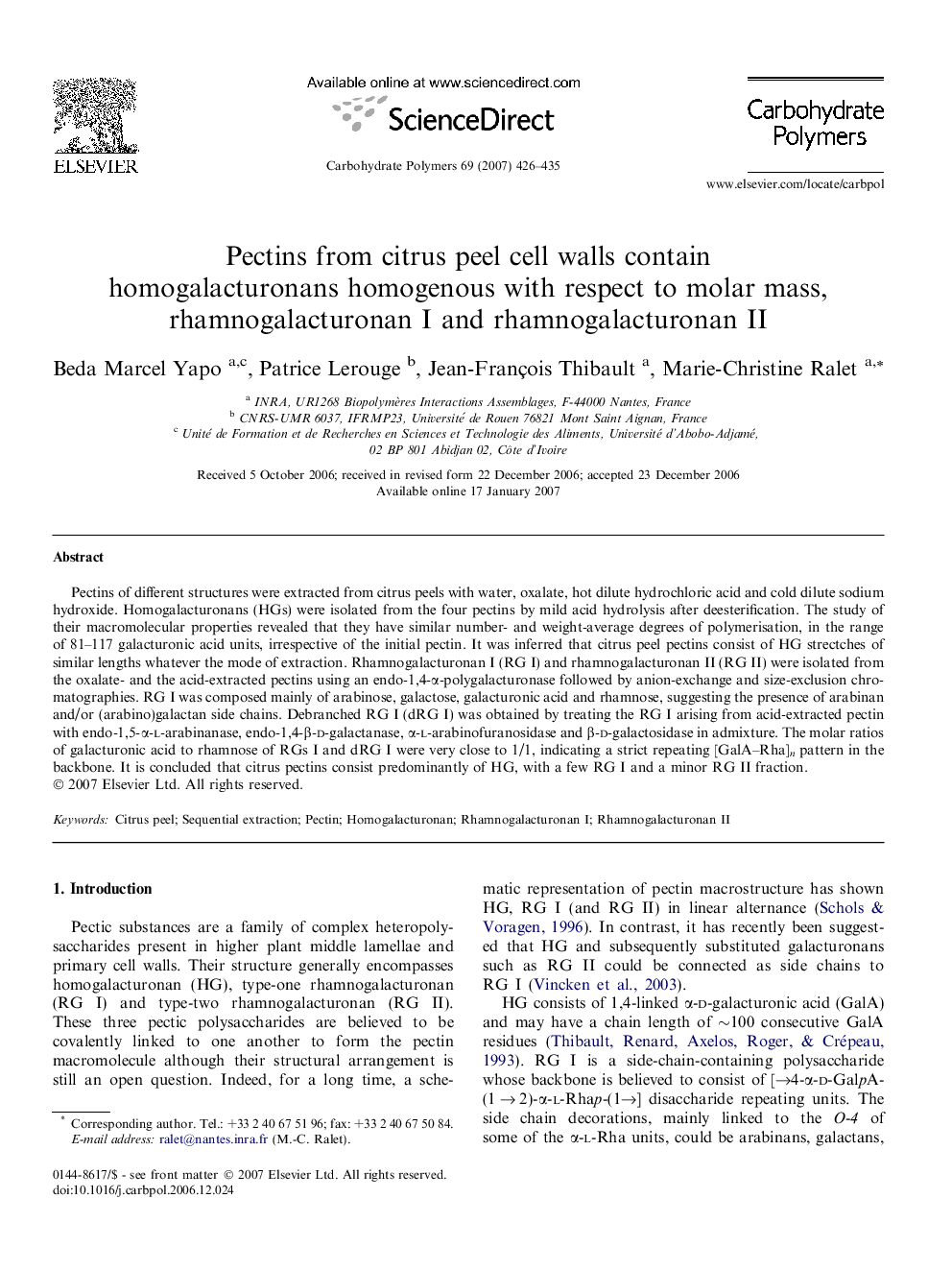| Article ID | Journal | Published Year | Pages | File Type |
|---|---|---|---|---|
| 1387419 | Carbohydrate Polymers | 2007 | 10 Pages |
Pectins of different structures were extracted from citrus peels with water, oxalate, hot dilute hydrochloric acid and cold dilute sodium hydroxide. Homogalacturonans (HGs) were isolated from the four pectins by mild acid hydrolysis after deesterification. The study of their macromolecular properties revealed that they have similar number- and weight-average degrees of polymerisation, in the range of 81–117 galacturonic acid units, irrespective of the initial pectin. It was inferred that citrus peel pectins consist of HG strectches of similar lengths whatever the mode of extraction. Rhamnogalacturonan I (RG I) and rhamnogalacturonan II (RG II) were isolated from the oxalate- and the acid-extracted pectins using an endo-1,4-α-polygalacturonase followed by anion-exchange and size-exclusion chromatographies. RG I was composed mainly of arabinose, galactose, galacturonic acid and rhamnose, suggesting the presence of arabinan and/or (arabino)galactan side chains. Debranched RG I (dRG I) was obtained by treating the RG I arising from acid-extracted pectin with endo-1,5-α-l-arabinanase, endo-1,4-β-d-galactanase, α-l-arabinofuranosidase and β-d-galactosidase in admixture. The molar ratios of galacturonic acid to rhamnose of RGs I and dRG I were very close to 1/1, indicating a strict repeating [GalA–Rha]n pattern in the backbone. It is concluded that citrus pectins consist predominantly of HG, with a few RG I and a minor RG II fraction.
